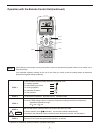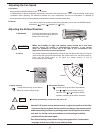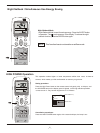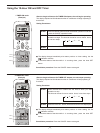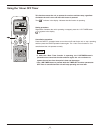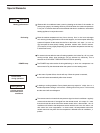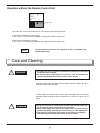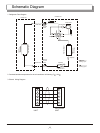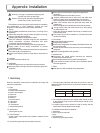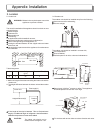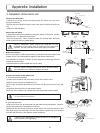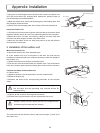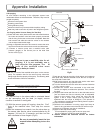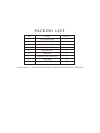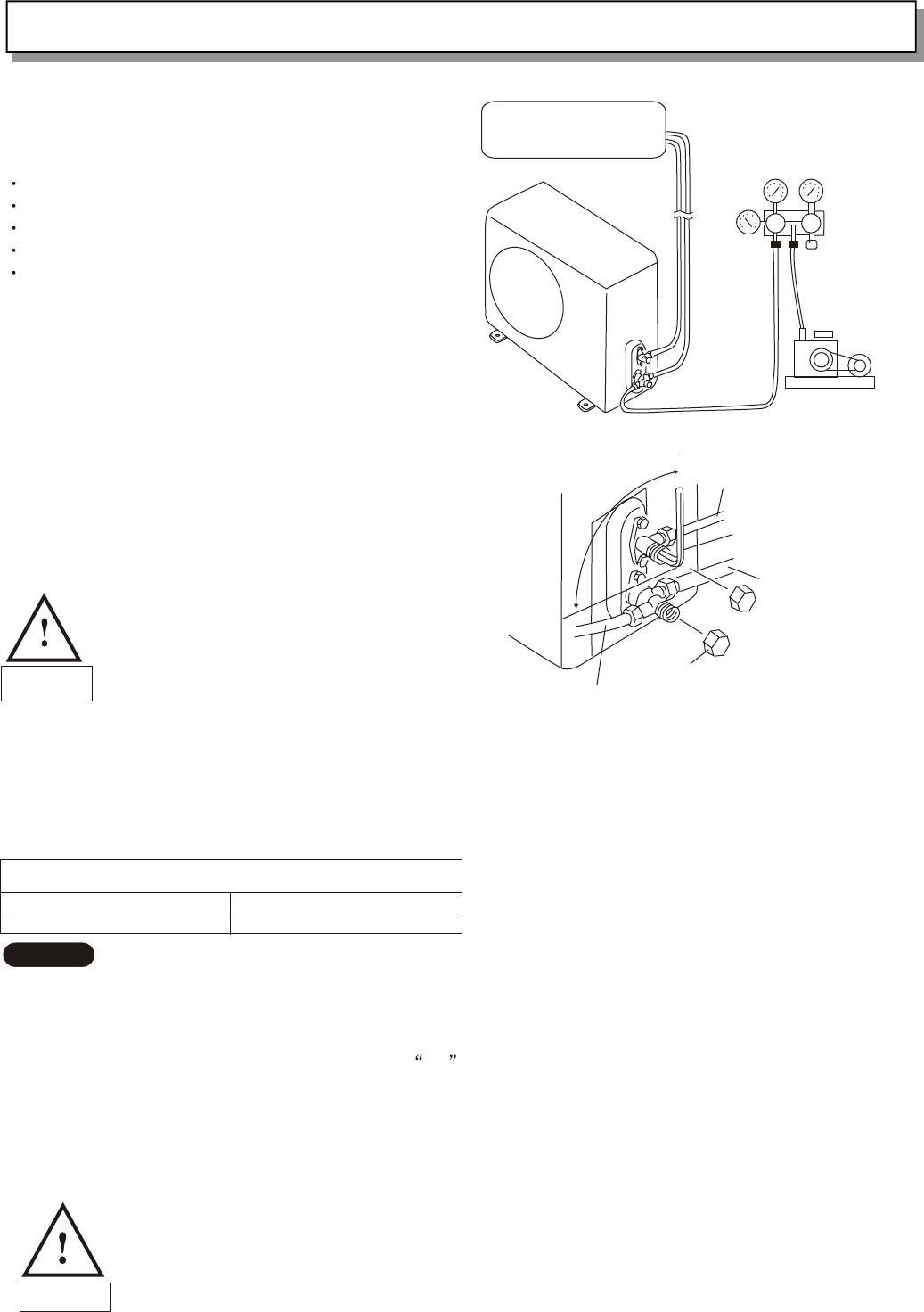
CAUTION
23
Appendix: Installation
5.Air purging
Air and moisture remaining in the refrigerant system have
undesirable effects as indicated below. Therefore, they must be
purged completely.
pressure in the system rises
operating current rises
cooling efficiency drops
moisture in the air may freeze and block capillary tubing
water may lead to corrosion of parts in the refrigerant system
Air Purging with a Vacuum Pump (for Test Run)
(1)Check that each tube (both narrow and wide tubes between
the indoor and outdoor units have been properly connected
and all wiring for the test run has been completed. Note that
both narrow and wide tube service valves on the outdoor
unit are kept closed at this stage.
(2)Using an adjustable wrench or box wrench, remove the valve
caps from the service valve on both narrow and wide tubes.
(3) Connect a vacuum pump and a manifold valve (with
pressure gauges) to the service port on the wide tube
service valve.(Fig.A)
CAUTION
Be sure to use a manifold valve for air
purging. If it is not available, use a
stop valve for this purpose. The ¡°Hi¡±
knob of the manifold valve must
always be kept closed.
(4)With the ¡°Lo¡±knob of the manifold valve open, run the vacuum
pump. The operation time for the vacuum pump varies with
tubing length and the capacity of the pump. The following table
shows the amount of time for evacuation:
Table
Required time for evacuation when capacity
of 100 liter/h vacuum pump is used
If tubing length is less than 10 m
10 min. or more
15 min. or more
If tubing length is more than 10 m
Be sure to completely insert the hex
wrench before attempting to turn the
valve.
The required time in the above table is calculated based
on the assumption that the ideal (or target) vacuum
condition is around 10 mmHg abs.
(5) With the vacuum pump still running, close the Lo
knob of the manifold valve. Then stop the vacuum
pump.
(6)With the accessory hex wrench, turn the valve stem on
the narrow tube service valve counterclockwise by 90
degrees (1/4 turn) for 10 seconds, and then turn the
stem clockwise to close it again. (Fig.B)
NOTENOTE
(7)Leak test all joints at the tubing (both indoor and outdoors)
with liquid soap. Bubbles indicate a leak. Be sure to wipe off
the soap with a clean cloth.
(8)With the hex wrench, turn the wide tube service valve stem
counter-clockwise to fully open the valve.
(9)Turn the narrow tube service valve stem counter-clockwise
to fully open the valve.
(10)Loosen the vacuum hose connected to the wide tube
service port slightly to release the pressure. Then, remove
the hose.
(11)Replace the bonnet and flare nut on the wide tube service
port and fasten the flare nut securely with an adjustable
wrench or box wrench. Next, mount the valve cap and
tighten it with a torque wrench (the cap needs to be
tightened with the torque of 200kg-cm). This process is
very important to prevent gas from leaking from the system.
(12)Test run the air conditioner.
(13)While the air conditioner is running, apply liquid soap to
check for any gas leaks around the service valves or caps.
(14)If there is no leakage, stop the air conditioner.
(15)Wipe off the soap on the tubing.
This completes air purging with a vacuum pump and
the air conditioner is ready for actual operation.
6. Please contact the technical service for further
information.
Vacuum pump
Indoor unit
Outdoor unit
Lo
Hi
Manifold valve
Pressure
gauge
90 (1/4 turn)
Narrow tube
Hex wrench
Wide tube
Valve cap
Vacuum hose to manifold valve
Fig.B
Fig.A



